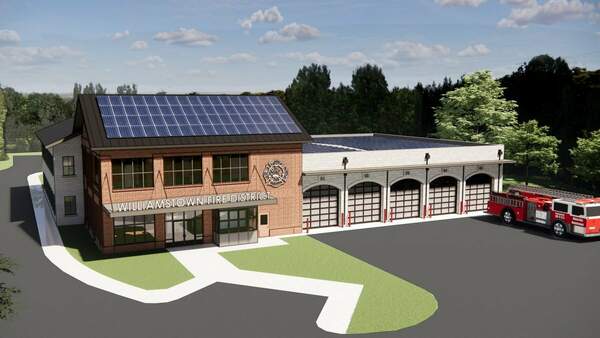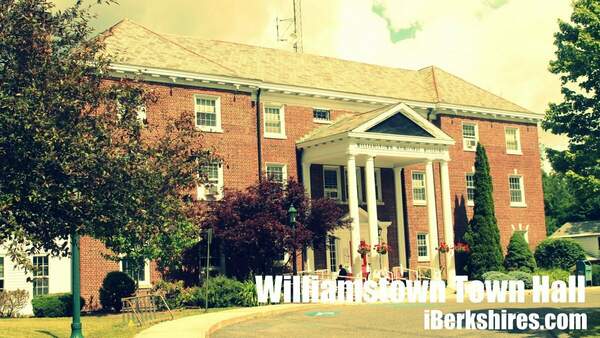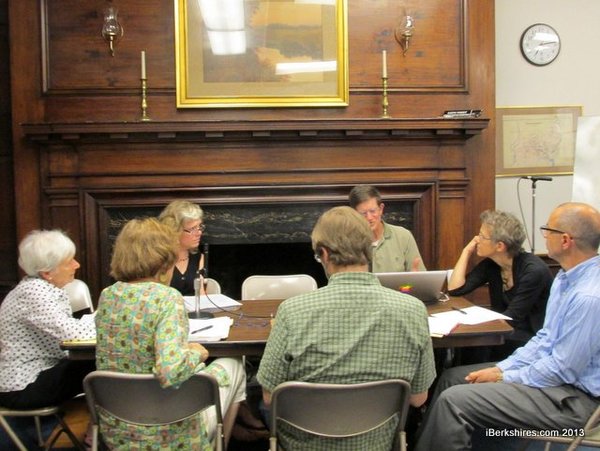
Williamstown Coordinating Panel Meets With Lowry Critic
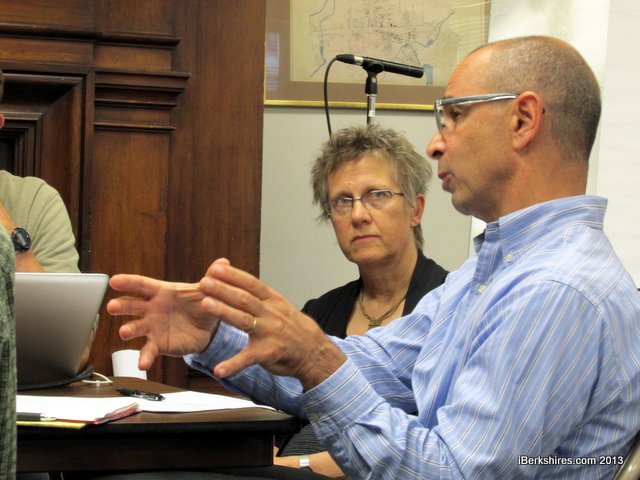 Affordable Housing Trust Chairman Stanley Parese said the town could consider purchasing private property for housing. Affordable Housing Trust Chairman Stanley Parese said the town could consider purchasing private property for housing. |
WILLIAMSTOWN, Mass. — The committee overseeing the town's affordable housing efforts on Monday met with a leading critic of the proposal to develop conserved town-owned land.
Robert Scerbo of Longview Terrace over the last six months has frequently participated from the floor at committee meetings and at April's special town meetings to argue why the town should look to other sites instead of the 30-acre so-called Lowry property off Stratton Road.
On Monday, he was an invited guest of the Long-Term Coordinating Committee, which is composed of the chairs of most of those town committees and is chaired by Selectmen Chairwoman Jane Allen.
Instead of speaking from the floor, Scerbo had a seat at the table, where he shared research he has compiled about the costs of developing subsidized housing on four different sites: Lowry, a pair of town-owned brownfield sites (the former town garage and the former PhoTech mill) and a portion of the privately owned former Cable Mills site that may be available for sale.
Scerbo brings 35 years of experience as a developer to the conversation, and he told the panel that his experience includes affordable housing developments, including the Berkshire Landings apartments in North Adams.
For the most part on Monday, Scerbo avoided direct criticism of the Lowry development that has been on the table since it was advocated by the town manager during November's announcement of the town's application for a federal Hazard Mitigation Grant to deal with the flood-ravaged Spruces Mobile Home Park.
But it was clear from Scerbo's presentation that his research supports the notion that developing Lowry would be more costly than some other options.
"Often people will look at an undeveloped piece of property, and I don't want to be specific, but take any vacant piece of land, it's easy to drive up to and say, 'Put a road right through here and build houses,' " Scerbo said. "And what you find is those properties that have never been developed are the most challenging."
Scerbo said, for example, brownfield sites often have dealt with drainage issues.
"You put down 2,500 feet of road, that's a lot of impervious area," he said. "Individual rooftops, individual parking areas ... those are all things I'd look at in any development."
The 2,500 feet of road is based on a preliminary conceptual design for Lowry that was commissioned by the town's Affordable Housing Committee. Scerbo's cost comparison shows that road contributes significantly the infrastracture costs of a potential Lowry development.
By contrast, the three brownfield sites would require less than 1,000 feet of road each. The former town garage site would require the least amount of new road, about 470 feet by Scerbo's calculation.
The bottom line is that the infrastructure cost alone would increase the per-unit cost of Lowry homes by $30,000 to $35,000, compared to the other sites Scerbo analyzed.
"Unfortunately, when it comes to developing affordable housing, it's not affordable to develop," Scerbo said.
When you order asphalt to pave roads, the supplier does not give you a break on the price because of the nature of the project, he said.
"It costs the same amount of money to develop a market rate unit as an affordable housing unit," Scerbo said. "You have to develop affordable housing in the same astute manner you'd develop market rate housing. The only thing you're not achieving is the market price and your profit margin."
Scerbo is a member of the Stratton Hills Condominium Association, which this spring secured a legal opinion from a Pittsfield attorney challenging the opinion of Williamstown's town counsel on the conservation status of the Lowry property. But he relied on the recommendations of other developers throughout Berkshire County in compiling his research, which he stressed is based on estimates.
|
On Monday, he reviewed a summary of his research for the full LTCC and presented a more complete report to Allen.
Scerbo encouraged the committee to consider seeking outside testimony and praised the June 3 testimony of John Broderick, the executive director of Bennington, Vt.'s, Regional Affordable Housing Corp.
"I was very impressed with John Broderick," Scerbo said. "I think he's just far enough removed (physically) that he can look at things objectively."
The committee plans to bring in more outside experts at its next two meetings. It decided Monday to invite a representative from the non-profit Higher Ground to its July 1 meeting and the president of Pittsfield's Berkshire Housing Development Corp. to its July 18 meeting.
In addition to Scerbo's presentation, Monday's meeting featured a continued discussion of the nascent LTCC's purpose and goals and the vetting of some "outside the box" ideas for new housing sites.
Allen suggested the committee might want to pursue a 2.4-acre parcel off Henderson Road that was to be donated to the town under an agreement between the Planning Board and the developers of the Sweet Farm subdivision.
Planning Board Chairwoman Ann McCallum pitched an idea that she admitted was a little radical: encouraging the expansion of the town's other mobile home park to accommodate residents soon to be displaced from the Spruces park.
McCallum said she engaged the owner of the Pines Lodge Mobile Home Park and found him to be amenable to the idea of expanding the park if there is demand for lots.
McCallum suggested the town could help spur demand by dedicating about $1 million from the $6 million FEMA grant for acquisition of new mobile homes at Pine Lodge.
"If Mike Deep bought that [land] and put in the infrastructure on his own and we and the Spruces residents guaranteed him some buyers, it might be worth it for him to do it," McCallum said.
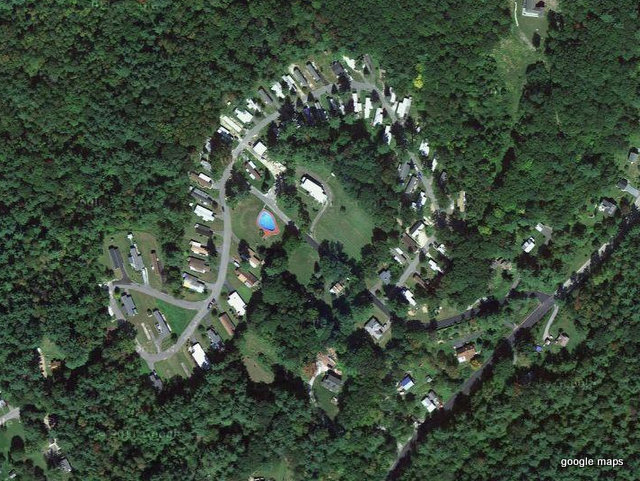 Ann McCallum, Planning Board chairman, suggested the possibility of expanding the privately owned Pines Lodge Park. Ann McCallum, Planning Board chairman, suggested the possibility of expanding the privately owned Pines Lodge Park. |
She said she started looking at Pines Lodge after hearing the preferences of Spruces residents at a listening session the LTCC hosted last month.
"What they really like is what they have, and it doesn't have to be at the Spruces," McCallum said.
A representative from Higher Ground, the nonprofit born soon after Tropical Storm Irene devastated the Spruces in 2011, attended Monday's meeting and shared her impression of what Spruces residents' reaction might be to the Pines Lodge site.
"They know Pines Lodge is there," Susan Puddester said. "I know it's very steep for some people. ... It's not as much like the Spruces as some other options might be."
The LTCC members in attendance agreed that the possibility of expanding Pines Lodge is worth considering.
"Maybe it's crazy," McCallum said. "Maybe we don't want to do that. Maybe we don't think endorsing mobile homes is a good thing to do. But it seems to me that's what (the Spruces residents) wanted."
The LTCC Monday also discussed briefly the possibility of using proceeds from the FEMA grant to acquire privately held land to develop affordable housing. One concern with the Lowry property (and the larger town-owned Burbank property) is that it currently is in use for agricultural production.
"There have been any number of people who have suggested to me that we as a town should be looking at privately owned property," said Stanley Parese, the chairman of the town's Affordable Housing Trust.
The committee discussed the delicacy of considering potential parcels and broached the idea of meeting in executive session at some point.
"I do think it would be potentially counterproductive for somebody who owns a piece of land to be watching WilliNet and be watching us saying, 'Hey, let's buy so-and-so's property,' " Parese said, referring to the town's community access television station.
Scerbo touched on the acquisition question during his presentation, saying that a good ballpark figure to use for land cost is about $10,000 per housing unit.
Scerbo said that if the town does decide to acquire land, it should consider as many sites as possible.
"The more properties you look at, the more you engage in the negotiating process, the more likely you are to acquire property you want at the price you want," Scerbo said.
"It's tough to negotiate with someone who knows you don't have any other options."
Below is a summary provided to the committee by Scerbo:
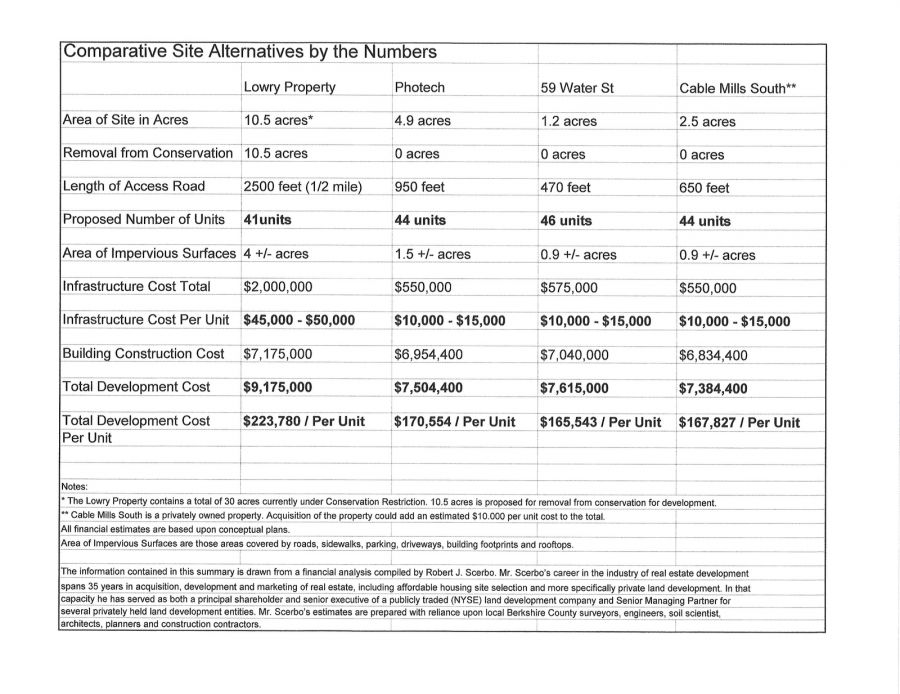
Tags: affordable housing, Spruces,

 WILLIAMSTOWN, Mass. — The Prudential Committee on Wednesday signed off on more than $1 million in cost cutting measures for the planned Main Street fire station.
WILLIAMSTOWN, Mass. — The Prudential Committee on Wednesday signed off on more than $1 million in cost cutting measures for the planned Main Street fire station.